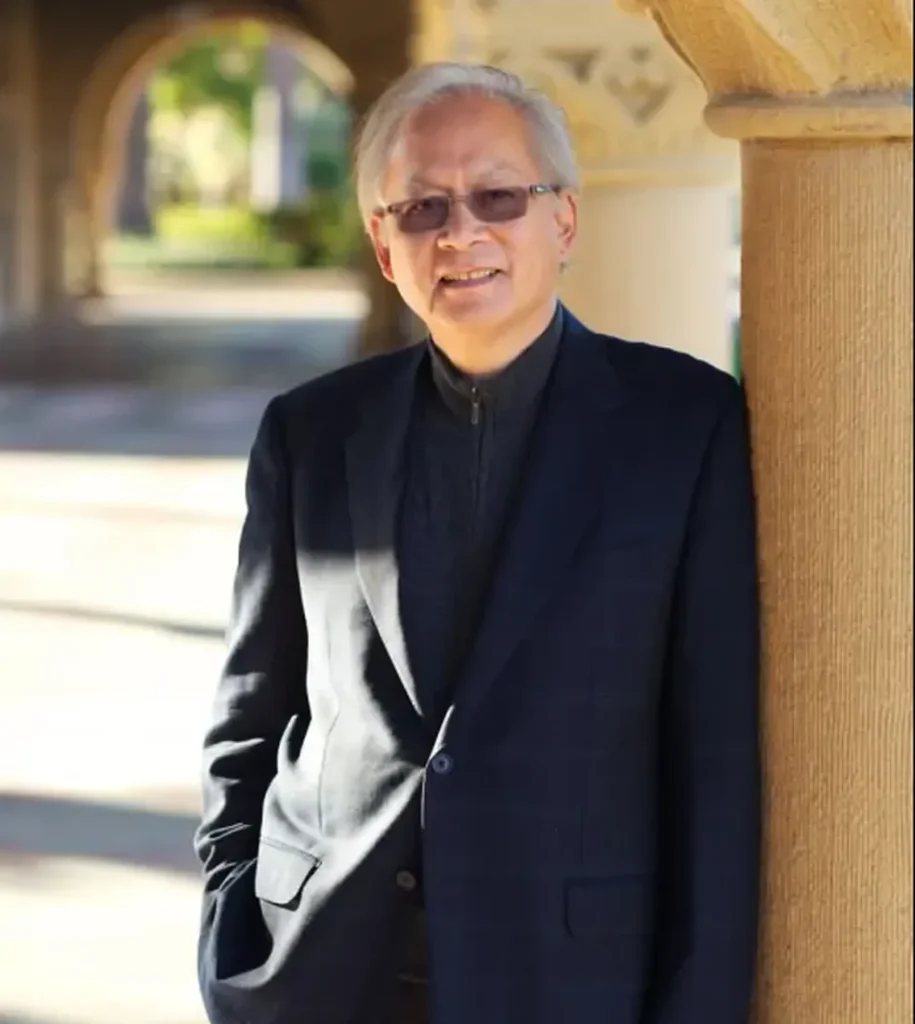Milan, 12 September.
A delayed train, a semi-empty subway, a short walk and I finally arrive at my destination.
I’m in the heart of the city, a stone’s throw from the Duomo, to have a coffee and have a chat.
A little chat that will lead me to ask myself a few questions about one of the largest and most powerful countries in the world: at dinner.
It is actually not the first time that I have tried to understand something more about this enormous state which is, for us, on the other side of the world.
Indeed, to tell the truth, China has piqued my interest for years, ever since the United States imposed the famous ban that brought Huawei, at least temporarily, to its knees.
At the time I tried to understand the geopolitical aspect of a story that, apparently, only concerned the tech world. However, things were much more complex than that and the more I read, the more I realized it. But not only: the more I investigated, the more it became clear that I knew almost nothing about one of the world’s superpowers. Neither from a technological point of view nor from a cultural point of view.
There was a world to discover.
Some time later I tried to fill this gap with a book: Red Mirror.
Simone Pieranni, popularizer and journalist, has lived in China for almost a decade and therefore I relied on his words to begin to better understand this country, especially from a hi-tech point of view.
I don’t want to spoil anything for you, also because this is not the book I want to talk to you about today.
However, if you would like to delve deeper into the topic, I suggest you both read Pieranni’s volume and listen to his interview for Le Vie del Tech. I guarantee you that it is more than interesting.

There is another book, recently published, that has piqued my interest in recent weeks: it’s called Do Good and Prosper: Interplay Between Philanthropy and Business Innovations.
The author is Edison TseAssociate Professor of Management Science and Engineering della Stanford University.
Stop.
How did we go from a coffee in Milan to a book by a Stanford professor?
My appointment was with Xiaoning Lyuentrepreneur and founder of Viva La Vida and VIVA AI.
I had already met Xiaoning some time before, precisely because of VIVA AI, a tool that uses artificial intelligence and art to engage and stimulate company employees.
However, putting aside the tech aspect of his company, we discussed the differences and similarities between our two countries and between Chinese and European companies.
At a certain point Xiaoning told me that many Chinese Internet companies have recently started to take the path of philanthropy. In short, in China there are big tech companies that think about the good of the community in a way that, at least on the surface, seems very different from the “social responsibility” we talk about in the West.
And here Professor Tse’s book comes into play. Xiaoning recommended that I read it and so I did.
Tencent and other Chinese Internet companies
Do Good and Prosper: Interplay Between Philanthropy and Business Innovations talks about philanthropy but before doing so it tells you a story, that of Chinese Big Tech.
A journey that starts in 1978, from Chinese economic reform which led the country to open up to the rest of the world.
“Opening” meant two things: opening up to foreign investments and taking a look at what was happening outside, trying to replicate what was good the West had to offer.
For example, in 1990 Lenovo decided to focus on personal computers which, at the time, were achieving huge success in the United States. Thus was born the first printed circuit that allowed IBM PCs to process Chinese characters.
In 1995 the Minister of Posts and Telecommunications began building the infrastructure necessary to provide citizens with access to the Internet.
Four years later it arrives Tencent with OICQ, an instant messaging service that was renamed the following year QQ, the ancestor who is very famous today WeChat.
Why so famous?
Because today it is impossible to live in China without using it. WeChat has gone from being a messaging app to a service platform which integrates WeChat Pay for payments and thousands of apps that work within the app. It’s an ecosystem that keeps people busy, on average, 90 minutes a day.
To help you make a comparison, Facebook’s average is 38 minutes.

On this app Tencent has built an empire based on 5 main sectors: messaging, social networks, gaming, video streaming and payment systems. To these is added a sixth: il cloud computing, created to support all the other activities of this Chinese giant.
However, Tencent is not the only large Internet company in China.
Think for example about Ali Baba which not only is an e-commerce giant but can count on Alipay which is the largest payment system in the world.
And then there is Baidu, which was born as an alternative to Google and which in 2016 gave birth to PaddlePaddlea platform dedicated to the development of products based on deep learning, a platform that today has 4 million developers and 180,000 companies from all over the globe.
There is also one among the Asian giants Didiwhich over the years has managed to outperform Uber thanks to a series of maneuvers and strokes of genius that today make it a complete transportation service platformwhich goes far beyond “I’m looking for a ride to get from point A to point B“.
 Beijing, China. February 19, 2021. Editorial Use Only, 3D CGI. Didi Signage Logo on Top of Glass Building. Workplace of Car Sharing Services Transport Company in High-rise Office Headquarter.
Beijing, China. February 19, 2021. Editorial Use Only, 3D CGI. Didi Signage Logo on Top of Glass Building. Workplace of Car Sharing Services Transport Company in High-rise Office Headquarter.
Why am I telling you all this? Why are we talking about these companies? Because in an unclear moment they decided to put people and communities at the center in an unprecedented and surprising way.
And since I wanted to understand, I wanted to know more, I decided to have a chat with the author of the book.
The interview with Edison Tse
 Il professor Edison Tse
Il professor Edison Tse
It’s 9:00 in the morning in California. 6pm for us.
I connect to Zoom and find Professor Tse waiting for me on the other side. I’m not sure where to start because a lot of questions are crowding in my brain. I decide to start from the most obvious: why write this book?
“I found it surprising that a lot of Internet companies in China embraced philathropy without making any money from it. […] Normally, whatever your type of business, you don’t launch into something new without it generating profit, right? […] There had to be something behind it and that piqued my interest.”
Ok but what exactly do we mean by philatropy? In practice, what do Chinese companies do?
Professor Tse gives me a very practical example.
We take JD.com, China’s second largest e-commerce platform. Together with Tencent, they created a program that I find brilliant: every time a user exceeds 100,000 steps, they give a chicken to a poor farmer and explain how to raise it. But that’s not all: thanks to a small device they monitor the activity of the chicken and with the data collected they help the farmer to establish the price at which that same chicken can be sold.
In essence, JD.com and Tencent teach the farmer a new activity, help him grow the chicken and then earn money, obtaining the funds to buy new chickens and support himself. At the same time this system allows us to bring to the market chickens that are healthier, that are raised in an ethical and organic way. This apparently pushes other users to walk to reach 100,000 steps and fuel the circle.
Another example?
Tencent introduced a very simple system: every 10,000 steps you walk gives you a small red digital flower.
That red flower, however, can be donated and that donation it then corresponds to – real – money that the Tencent Charity Foundation makes available to respond to the real needs of society.
In my opinion it is noteworthy for two reasons.
The first is that it’s basically the opposite of what we do in the West, with apps that give us money – a few cents at the end of the day – to make us walk and try to keep the population healthy. There is no charitable purpose, you do it for yourself.
The second reason is that this seemingly simple system is actually successful push people to act, to leave the house and walk to get a small red flower which they can then donate to others to do good, to improve the life of society.

Why does all this happen?
There is no universal answer but Edison Tse has a theory: “Internet companies in China grow differently than their US counterparts. In the USA they replicate their business in different parts of the world. For example, Amazon in Italy is the same Amazon we have here. This is because they grow following the same business model all over the world. In China a company grows thanks to its people, thanks to the fact that it manages to touch certain key points.
I’ll give you an example. If you are selling something to people, those people will need funds. And the company develops new products that allow you to get the funds and make the payment. Here’s what they do, they develop services that touch various aspects of your life.
Take Tencent. All their products respond to people’s specific needs.
This is why, in my opinion, lPhilanthropy is just another touch point, a key element that will attract other people because you are doing good.”
At this point I ask the professor if he thinks it could be a…















Leave a Reply
View Comments